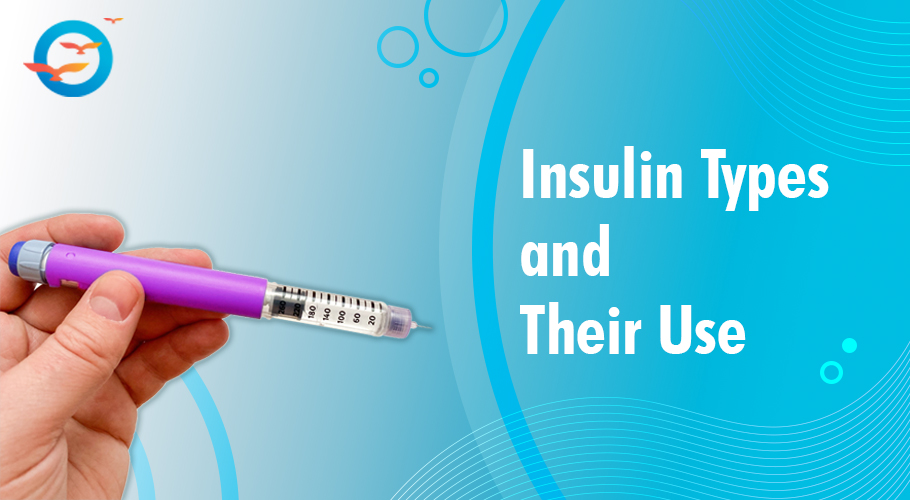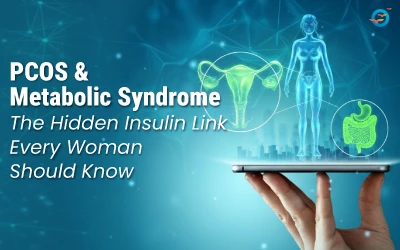Insulin Types and Their Use

Insulin types are broadly classified on the speed with which they take effect and how long they last. Each type is used in a specific circumstance, and to understand which one to use, it is necessary to understand the necessity of insulin.
Insulin is a hormone produced inside beta cells that are situated in the Islets of Langerhans in the pancreas. When you consume food, there is a rise in blood sugar, which triggers a release of insulin.
The beta cells actually produce a molecule known as proinsulin, this has two constituents: C-peptide and insulin. C-peptide volume tells us how much insulin a person is producing. This is very important in deciding treatment and prescribing insulin dose.
Sometimes the pancreas does not produce any—or very little—insulin, this condition is called Type 1 Diabetes. In such cases, the patient needs externally administered insulin shots to be able to use glucose consumed in meals.
People with type 2 diabetes, on the other hand, do produce insulin, but their bodies are unable to use this insulin, due to a chronic condition called insulin resistance. Unlike Type 1 Diabetes, this condition can be managed and even reversed with proper diet-exercise-stress management. If left unmanaged, or inadequately managed, Type 2 Diabetes patients, too, require insulin shots.
Now, the body needs to be able to manage the glucose levels in the blood through the day and night, as well as during meals when there is a sudden overload of glucose. Different types of insulin take care of these needs.
Insulin Characteristics
There are three basic characteristics that differentiate insulin: onset – the time period insulin takes to reach the bloodstream; peak time – when insulin is at its strongest blood-sugar-lowering strength; and duration – the time period when insulin continues to lower glucose in the blood. Based on these three characteristics, insulin is categorized into the following types:
Insulin Types
1. Quick-acting:
Insulin that goes to work within 15 minutes of being injected, it is known as rapid acting or quick-acting insulin. This insulin action lasts anywhere between two and four hours.
It is to be taken just before a meal, and the dose needs to be calculated based on the meal itself, I.e. volume, composition, and other factors, such as physical activity, and the individual’s historical data.
2. Regular or short-acting:
This type of insulin typically reaches the bloodstream about half an hour after injection and peaks two to three hours later and works for up to six hours.
3. Intermediate-acting:
Here the insulin takes two to four hours to reach the bloodstream; peaks up to 12 hours after, and is effective for up to 18 hours
4. Long-acting:
This type of insulin lowers blood glucose levels for up to 24 hours after administration.
5. Ultra long-acting:
This type of insulin takes about six hours to reach the bloodstream and does not peak. Its effect lasts for more than 36 hours.
6. Pre-mixed:
This is a combination of intermediate and short-acting insulin. It is normally taken 10 to 30 minutes prior to mealtimes. It is generally used for patients who may be unable to draw insulin from two bottles, either due to poor eyesight or manual dexterity.
Insulin is a very strong drug, so it is important to follow the doctor’s instructions carefully. One of the biggest dangers is hypoglycemia(brought on by an overdose). Mistakes in calculating dosage, or administering the wrong type of insulin, can lead to this potentially life-threatening condition.
If you’re on insulin, you must also take some routine precautions in terms of storage, administration, disposal of needles, syringes, empty vials, etc., and emergency precautions—this includes carrying identification that provides information about your condition and medication, and a glucagon kit, that first-responders can use to administer quick care.
Ideally, one should not be on insulin at all. And this is very possible through proper diet exercise and stress release, undertaken under medical supervision. These, in fact, are the four protocols on which our diabetes-reversal programs are based. These protocols have helped tens of thousands reverse their diabetes and get rid of their medicines, including insulin, completely. For more information about diabetes-reversal visit us

